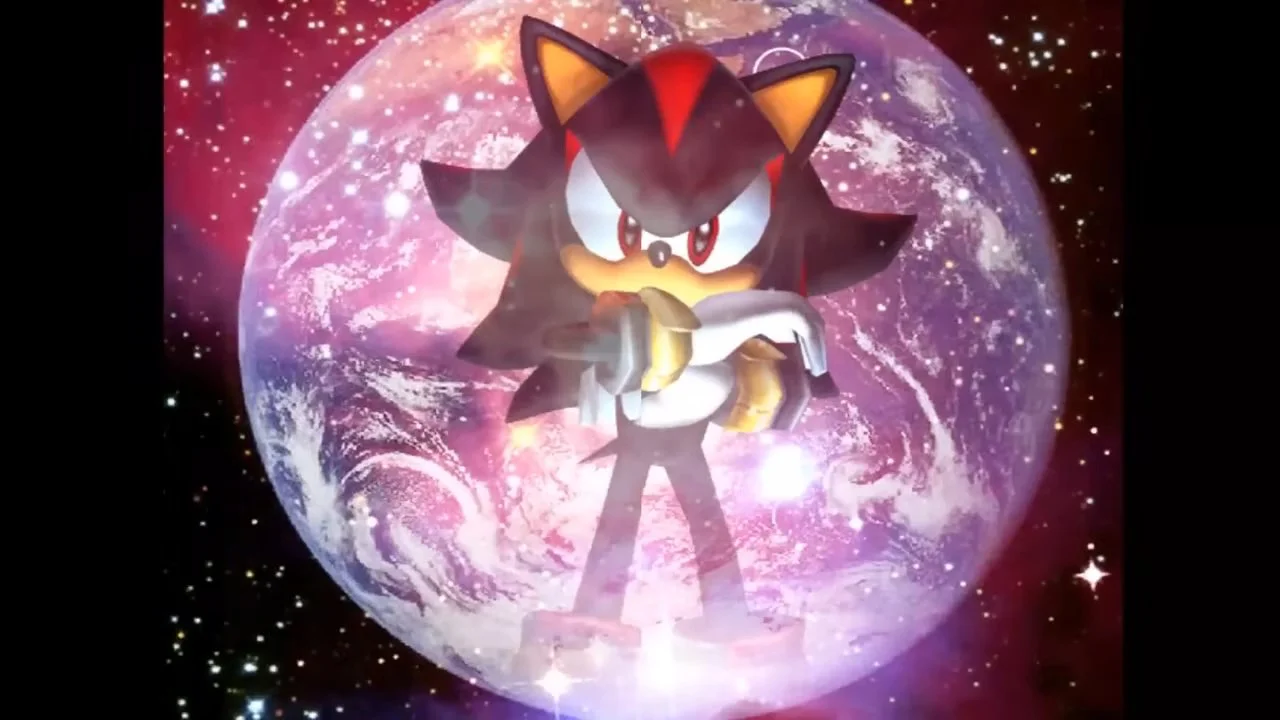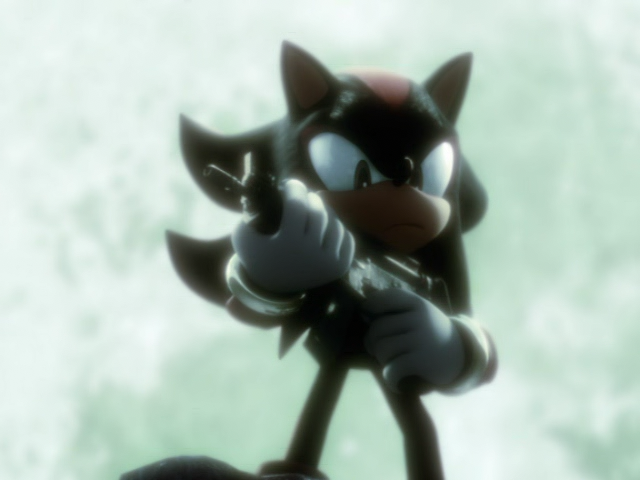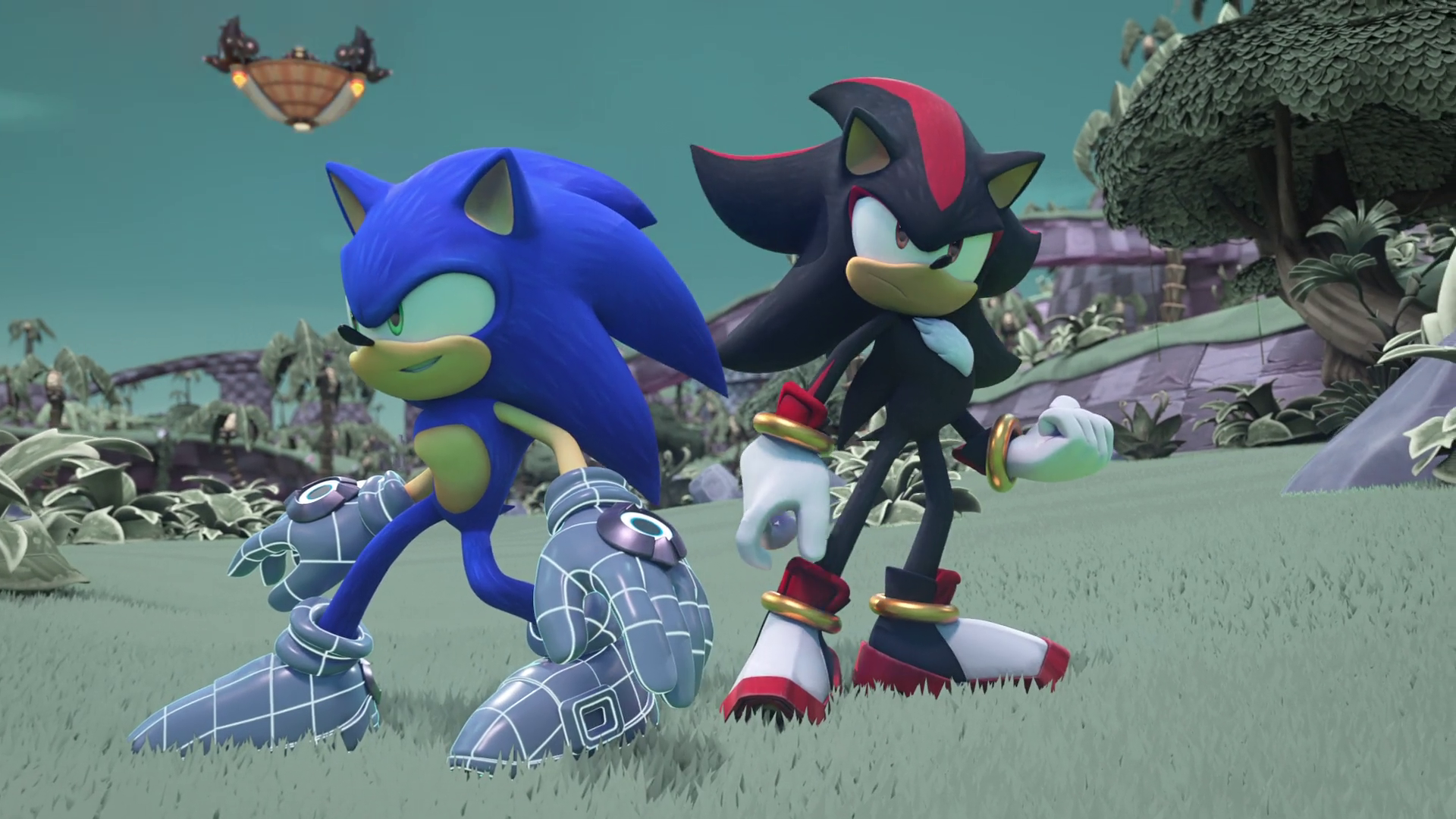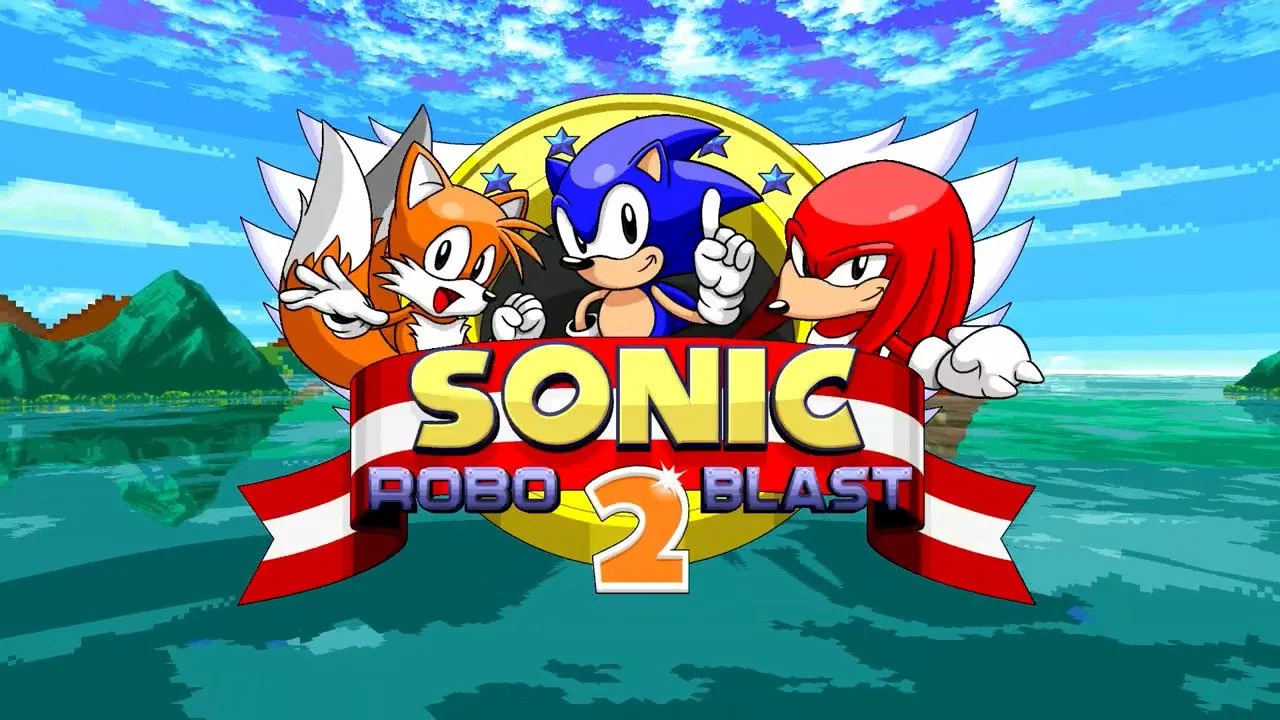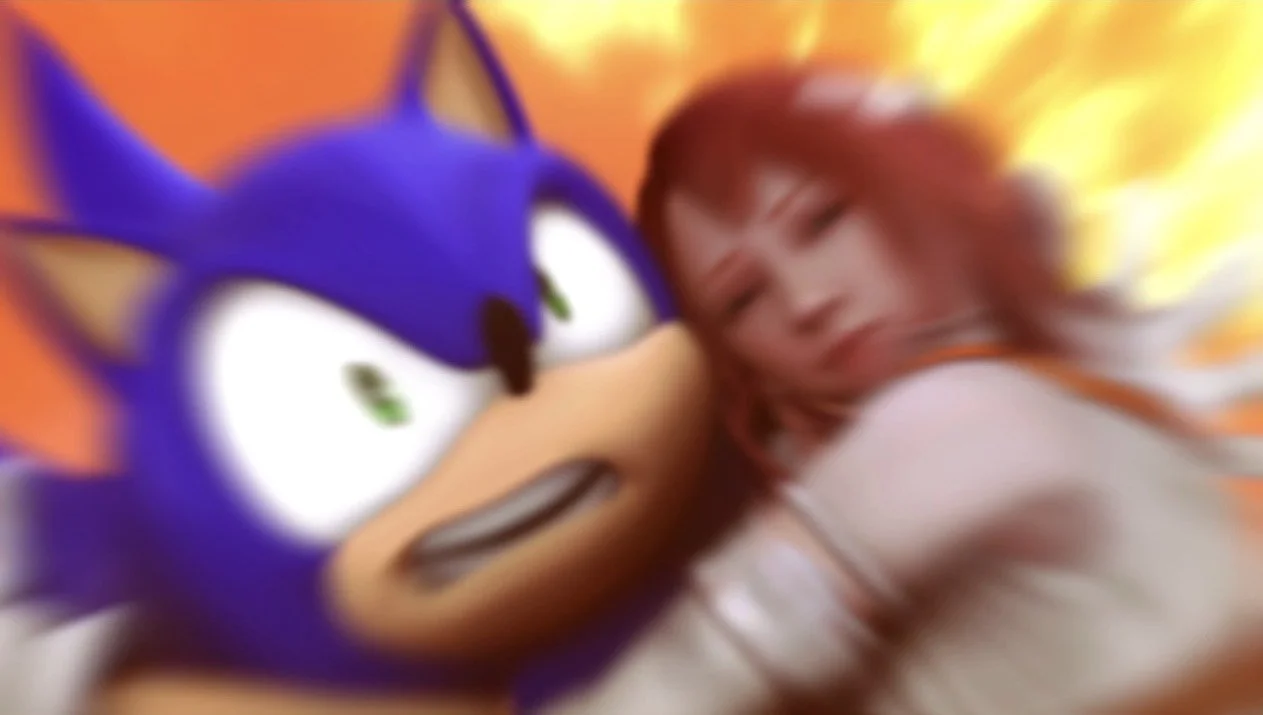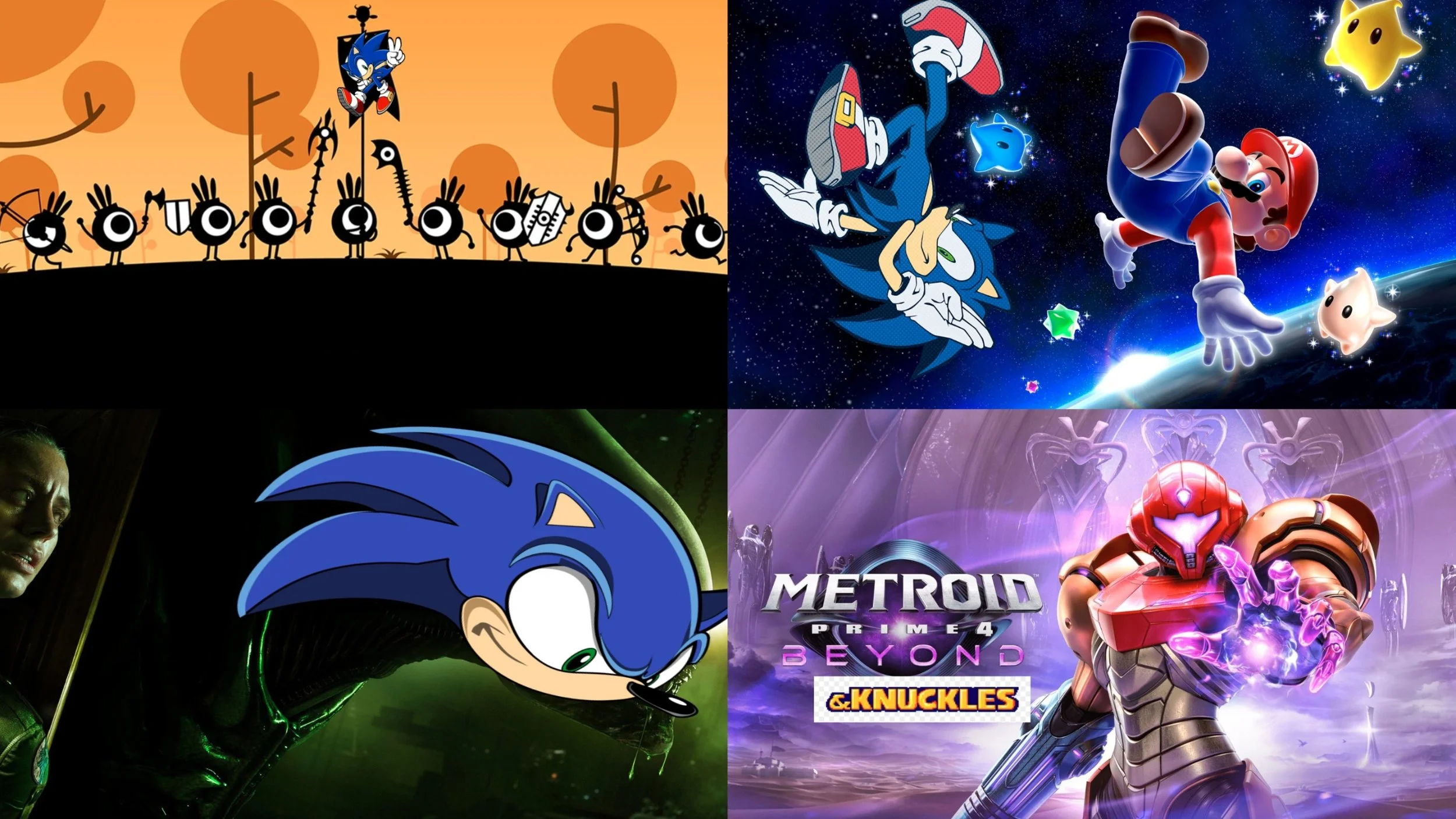sonicmenu | How Shadow The Hedgehog Got His Groove Back
I recall watching Sonic X Shadow Generations: Dark Beginnings, the three-part animated prologue to the Sonic X Shadow Generations remaster, and at one point thinking to myself, “Shadow the Hedgehog is cool again.” This was soon followed by, “Wait, Shadow wasn’t cool?” and a horrid realisation that, yeah, Shadow had not been cool for a very long time.
So, what happened? How did Shadow lose that cool factor that defined him for years and how did he get it back? First, we need to understand what it is that made Shadow so popular to begin with when he made his debut in 2001’s Sonic Adventure 2.
The Original Dark Beginnings
Obviously, a big part of Shadow’s popularity is his simple yet sleek design: his jet-black fur, red highlights, and sharper quills evoke edgy anti-heroes like Spawn, and his hover skates give him a slightly futuristic element. He was unlike any other Sonic character that came before, whose brighter colour palettes were more friendly and welcoming.
His introduction (assuming you play SA2’s Hero story first) is also strong: he suddenly appears atop a wrecked robot, looming above Sonic as he mysteriously monologues about the power of the Chaos Emeralds. And when Sonic tries to throw hands, Shadow demonstrates his (initially) unique Chaos Control teleportation power, giving us the below iconic shot of the two hedgehogs zipping past one another (be warned, I’m probably going to be using the word “iconic” a lot).
He then introduces himself as the Ultimate Life Form, a boast he spends the rest of the game backing up, proving himself to be just as fast as Sonic. Shadow very much meets the standard for a rival character, presented as the hero’s superior in almost every way. And while he has displays of arrogance that can risk making a character annoying, Shadow’s skills more than warrant it.
All of this is fairly superficial stuff, though, and while Shadow’s design and capabilities are instrumental to his popularity, it goes a lot deeper than that. While Shadow and Sonic are perfect parallels to each other., being As very driven individuals who prefer to follow their own rules withand a fondness for talking mad shit with allies and enemies alike, Shadow isn’t just Sonic but meaner. In fact, what was probably the most fascinating thing about Shadow at the time was how he wasn’t necessarily evil.
In SA2, Shadow is not motivated by moustache-twirling villainy, but anger born from the grief of losing his only friend: a young girl named Maria who was callously executed by the military organisation G.U.N. as part of an operation to cover up Shadow’s creation. It is a shockingly dark and layered backstory for a Sonic the Hedgehog character, and I think that’s at the heart of what makes Shadow cool. It’s not just the badass attitude; it’s that he has layers. He’s complex.
This is made abundantly clear throughout SA2’s Dark storyline, where Shadow’s memories of Maria are what encourage him to save Rouge. When Rouge challenges him on whether his memories are even real, he argues it doesn’t matter because he’s still Shadow the Hedgehog. And when Amy jogs his true memories of Maria’s final wish — for Shadow to give the people of the world a chance to be happy — he immediately switches sides. Even if he can’t forgive the world for taking his best friend, Shadow will honour her memory regardless. One Super transformation later and an admittedly mid final boss that’s elevated by the iconic “Live & Learn”, it’s no wonder Shadow’s apparent death and status as a one-off character didn’t stick.
Shades Of Black
In 2003, Shadow was brought back for Sonic Heroes, albeit with amnesia. In retrospect, I personally found this new plot thread unnecessary (especially when there are several characters that could easily explain his own backstory to him) and Heroes’ minimalist approach to storytelling means his characterisation doesn’t get a lot of focus and certain traits were pushed to the wayside. That said, it did mark the start of his tight working relationship with Rouge and Omega as Team Dark, one that would later flourish into genuine camaraderie and a fun parallel to Team Sonic.
Fortunately, Shadow would earn a lot more screen time and focus in fighting game Sonic Battle (where he takes on something of a mentor role for the ancient robot Emerl, with whom he shares a lot of similarities) and especially in 2005 with his own game, simply titled Shadow the Hedgehog. The latter game sought to not only let Shadow take the starring role, but flesh out his backstory, bring resolution to his amnesia subplot, and let fans experience the character as both a hero and villain, as well as try and appeal to an older audience.
Shadow’s more complex nature and broody personality does lend itself to a darker than usual tale, but (while I do have a soft spot for it) Shadow the Hedgehog’s efforts to be more mature are frankly embarrassing, with characters frequently exclaiming “Damn” and Shadow wielding realistic firearms. However, despite the widespread mockery it received at the time, it’s remembered a bit more fondly nowadays (the gloriously over-the-top opening cutscene is still a hype watch that sets the game’s tone perfectly) and I think that’s entirely down to Shadow himself.
For as pointless as the game’s morality system and multiple story paths are, they do provide opportunities for Shadow to demonstrate all his best traits. Completing evil missions let his angst and rage over Maria’s death come to the forefront, whereas the hero missions let his softer side shine through. Even the neutral missions highlight his loner attitude and independence; his unwillingness to side with the villains comes not from any sense of morality but because Shadow does things his way (we don’t talk about the moments where he deludes himself into thinking he’s a robot clone).
And while the swearing and guns are a bit much, they’re not wholly unsuited to his character. Plus, if you were a young teen in 2005 like I was, they just made Shadow cooler. They even gave him a motorbike. It’s a piece of shit in-game, but it’s become so heavily associated with his character that it’s been referenced multiple times since.
Ironically, Shadow’s character would peak with 2006’s Sonic the Hedgehog (better known as Sonic 06), which is without a doubt the lowest point in the franchise’s history. Although the game and its story are objectively awful, Shadow’s campaign would provide some surprisingly strong character writing and tie a neat little bow on his personal arc.
After coming to terms with his past and dedicating himself completely to the world’s protection, 06 depicts Shadow as serious, professional, always focused on getting the job done, and even willing to ally himself with a now reformed G.U.N. His campaign’s introduction perfectly encapsulates this: a very brief cutscene of him efficiently trashing robots to infiltrate an Eggman base like a superpowered John Wick.
However, his newfound peace of mind is threatened by the unsubtly named Mephiles the Dark, who informs Shadow that despite all the good he’s done and will do, the world will betray him regardless. In the wake of an apocalypse, he will be scapegoated and sealed away because people fear him and his power. It’s a revelation that visibly shakes him, especially when Omega admits he’ll have a hand in it. And yet Shadow doesn’t waver. Mephiles’ temptations to exact premature revenge fail and, in his story’s climax, Shadow delivers the perfect summation of his character in what is my favourite scene of his in the whole series:
“If the world chooses to become my enemy, I will fight like I always have.”
The Dark Ages
Sadly, Shadow’s relevance would take a hit in the ensuing years, particularly in the 2010s. Like many other supporting characters in the series, Shadow’s appearances would become few and far between outside of spin-off games. And if he did show up, he’d either have little relevance or focus. To be fair, overexposure can be a bad thing, and an unwarranted appearance can make audiences resentful of a character. The real issue is that Shadow didn’t act like himself anymore.
All those details I’ve discussed about his character thus far? The ones that enhanced Shadow and made him really cool beyond the badass attitude and raw strength? They kind of vanished, leaving him as precisely what any outsiders would initially assume he was: an eternally grumpy loner who seemed to dislike everyone and everything around him, like a bargain basement Vegeta.
In Sonic Free Riders, he joins the racing tournament purely to win the cash prize (even willing to just steal it) and is uncharacteristically cruel to his robot teammate. In Sonic Generations, he seems entirely unbothered by the threat the Time Eater poses (outright saying he doesn’t care how he wound up in White Space) and picks a fight with Sonic… just because (a detail Shadow Generations would retcon).
Shadow’s reworked behavior is at its worst in the Sonic Boom subseries, where he’s just some random prick that is antagonistic to Sonic and friends for no given reason. I don’t actually mind his characterisation too much in Boom since it’s a different continuity, and with the TV show primarily being a comedy, making Shadow the one serious and threatening character is itself part of the joke. But when he’s preventing Sonic from saving the world for the sake of proving a point or outright allowing its complete destruction because he finds everyone annoying, he may as well be someone else because that is not Shadow the Hedgehog.
2017’s Sonic Forces brought Shadow back to himself a bit, mostly in the Episode Shadow DLC, keeping him stoic but not overly abrasive. Also, he was playable in a mainline game for the first time in over 10 years, and getting to do cool things as Shadow is another simple reason for why fans enjoy his presence. Still, that special sauce was still absent.
Things weren’t much better in the comics. I can’t speak to the Archie comics, but the IDW run portrayed Shadow as arrogant and hard-headed to an extreme fault, especially in the Metal Virus arc, where he ignores Sonic’s advice about not touching the infected zombie robots. Why? Apparently it’s because, as the Ultimate Life Form, he thinks he can’t be infected. Spoilers: he can. That’s not arrogance, that’s sheer stupidity (also, it’s a small moment, but he’s weirdly unfazed when Omega, one of the few characters he’s meant to like, gets utterly trashed and torn apart).
Some fans have speculated that Shadow’s characterisation was a result of a Sega mandate which, if accurate, would go a long way to explain why Shadow was the way he was in the 2010s. It is possible Sega had a very strict view of him and wanted him depicted in a specific way, no doubt for the sake of maintaining and protecting the brand. But in doing so, it took away the very reasons why Shadow became a beloved character in the first place.
I’m Thinking He’s Back
We now come to the 2020s and something has shifted within the Sonic franchise. After the 2010s were spent making the series self-aware, giving it the Saturday morning cartoon energy some people think it always should’ve had, Sega seemed to realise that a lot of fans care tremendously about characterisation and continuity. They didn’t want basic plots and simple characters: they liked it when these stories and characters were taken seriously. Actually, “seriously” isn’t the right word — fans wanted sincerity.
This was made apparent with 2022’s Sonic Frontiers, which featured a story far more character-driven and full of references and callbacks to previous games. And while it wouldn’t be until 2024 where we’d really see Shadow be impacted by this change in direction, we did get a taste of it thanks to 2023’s The Murder of Sonic the Hedgehog, an April Fool’s visual novel (which re-emphasised how he has a soft spot for Amy, even gifting her concert tickets for her birthday), and 2022’s Sonic Prime Netflix show.
While Sonic Prime has him fairly antagonistic towards Sonic, Shadow’s motivations extend beyond pure animosity. In that show, Sonic and Shadow’s home universe is essentially erased in part due to the former’s recklessness, so Shadow tries to take it upon himself to get things back to normal. However, he eventually acquiesces and agrees to an alliance, showing that the writers understood how his strong independence doesn’t make him so much of a loner that he’d act like a stubborn blockhead.
The real good shit, though, came in 2024, and part of that can be attributed to the live-action Paramount movies. Thanks to the box office successes of 2020’s Sonic the Hedgehog and its 2022 sequel, the stage was set for Shadow to make his cinematic debut, which was hardly surprising. For as much as I’ve bitched about the 2010s, it did little to reduce Shadow’s popularity and guaranteed he’d be the next character to appear in the movies after Tails and Knuckles.
Sensing the perfect business opportunity, Sega wisely went all in on promoting Shadow in 2024, like the WWE pushing a hot new talent for Wrestlemania, in an effort to reestablish the character for existing fans and familiarise him with newer ones. This came to its apex in the triple threat of Sonic X Shadow Generations, the associated Dark Beginnings prologue animation, and, of course, the Sonic the Hedgehog 3 movie.
Dark Beginnings does a fantastic job of not only getting Shadow’s character back on track, but it even fleshes him out beyond his 2000s characterisation by showing more of his life with Maria. In particular, it depicts his frustrations over not being able to help cure her illness (the very reason he was created) and his fears that he’s a freakish monster no different to the alien race from which he was created. While it arguably seems like retreading old ground, it feels like a proper continuation of his arc in the wake of Shadow the Hedgehog and Sonic 06. He has embraced his new role as a protector of the world and has comfortably found close allies in Rouge and Omega, but he remains haunted by the loss of Maria. It’s honestly understandable that no matter how hard he tries to put his past behind him, that trauma will always be a part of him. The impeccable animation and fight choreography helps a lot too, giving Shadow some top-tier action set pieces that just let him be cool for the first time in what felt like forever.
This continued into Shadow Generations, which doubled down on the more fondly remembered aspects of his 2005 game. His guns and swears are gone, but now he has these new alien powers reminiscent of Marvel’s Venom symbiote. Ill-fitting for a cartoon hedgehog? Maybe, but again, it’s the sincerity that’s important. The game isn’t embarrassed by this; it revels in it and that’s what resonates with fans. A tight script and dialogue also mean Shadow’s current voice actor, Kirk Thornton, finally has something proper to chew on. I’ve personally found him to be a rather mediocre Shadow since he took over the role, but he’s fully come into his own with Shadow Generations now that he’s allowed to be vulnerable and not generically grumpy all the time.
And that’s another key part of Shadow’s return. Reuniting him with Maria was such a risky venture, but it paid off. Aside from making Maria herself more of a fleshed-out character beyond a typical nice girl who was cruelly killed, it gives Shadow opportunities to be softer and complex once more. While he’s given cool set pieces in levels and boss fights, I think the moments that make Shadow fans pop off the most are the quieter scenes he has. Specifically, the sincere smile (not a cocky smirk but a kind smile!) he gives Maria before he takes off for the final boss and the last cutscene where he’s forced to say goodbye to her, dashing off and shedding a single tear. I don’t think we’ve seen Shadow cry since 2001! It’s a little thing, but it truly cements that Shadow is a well-rounded character again.
I’d go into detail about Shadow’s depiction in the third movie, but I would be repeating myself at this point. All I’ll say is that while the movie deviates a lot from the source material (namely Sonic Adventure 2), it nails Shadow’s characterisation and truly understands the core of his character. It helps that director Jeff Fowler also worked on the Shadow game from 2005 and has as much reverence for the character as fans do. While the casting choice of Keanu Reeves was no doubt mostly due to wanting a big-name actor, he at least gives it his all and seemed to genuinely care about the role. I only hope the inevitable TV show spin-off keeps that momentum going and doesn’t push Shadow into the background like the Knuckles show did with its title character.
Throughout the 2010s, it felt like Shadow’s popularity was still dependent on how he was depicted the decade prior. Fans were clutching on to who he used to be since his then-current appearances weren’t giving them what they initially liked about Shadow. It didn’t matter if he did cool things; the character himself had become flat. It is possible Shadow will be sidelined for a while now (and that’s fair; he had a whole year to himself. Give some other characters time in the spotlight), but 2024 was undeniably the best thing to happen to him and it makes me want to see him appear in more story-centric games. Not just because I’ll get to see him do cool things, but also because those cool things will be enhanced by strong character writing.
Shadow the Hedgehog is many things. He’s serious but can be sassy. He enjoys solitude but has room in his heart for a select few. He’s ruthless but not lacking in compassion. He’s all this and more, and that is why he’s so cool.



